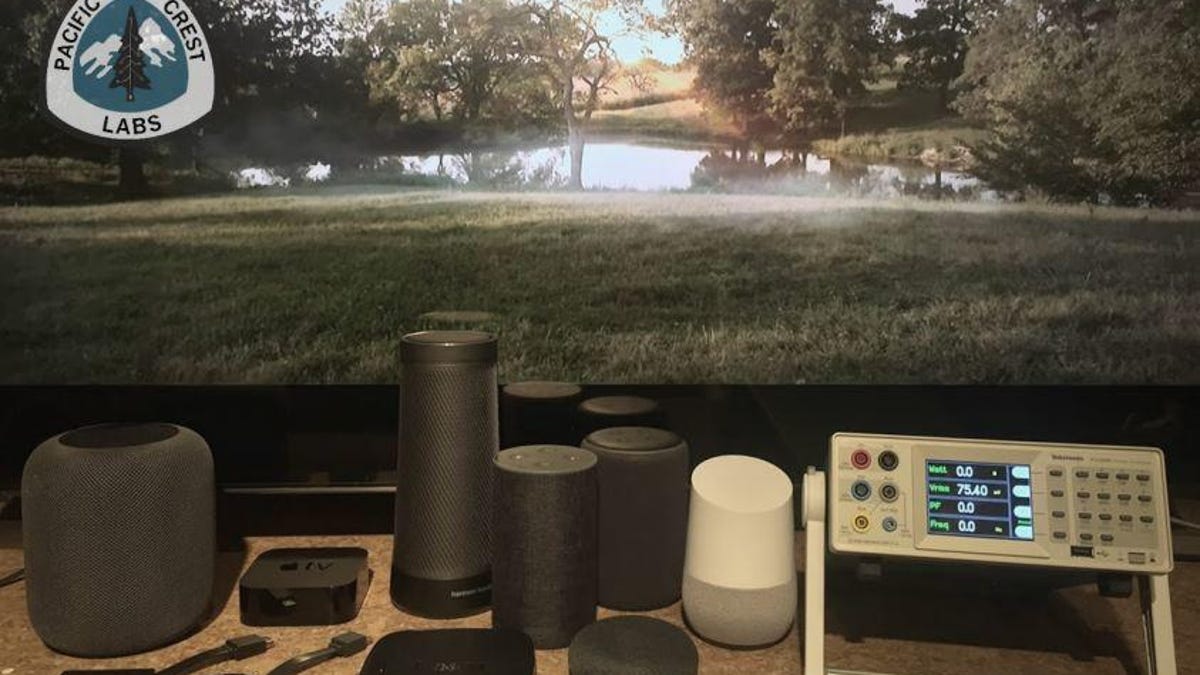Alexa and Google Assistant make energy hogs out of smart TVs, report says
Use a voice assistant to turn on your TV? Might want to check your power bill...

The NRDC found that many of today's smart TVs use a lot more power in standby mode if they're waiting for a voice assistant to turn them on. In some cases, it's enough to double their annual energy consumption.
Do you use Alexa or Google Assistant to turn your TV on with voice commands? Well, pay attention -- you might be doubling that TV's energy usage.
That's the most striking takeaway from a new report out this week from the Natural Resource Defense Council. In it, the green-minded nonprofit takes a close look at the energy efficiency of smart speakers like the Amazon Echo, Google Home Mini and Apple HomePod, as well as media streamers such as the Roku, Apple TV, Amazon Fire TV and Google Chromecast.
The good news is that all of those devices get high marks for efficiency in their own right. For instance, the report points out that smart speakers typically consume just a few watts while in standby mode and only slightly more when activated. In an average year, a second-gen Amazon Echo will consume about 15.2 kilowatt hours (kWh), which adds up to less than $2 for your annual energy bill. That number falls to 12.3 kWh for the Google Home Mini -- or less than a buck and half per year.
The problem comes when you sync one of those smart speakers up with your smart TV to control it with your voice, a feature that's supported by a growing number of models. Specifically, the NRDC found that TVs like those that can be turned on with a voice command will often consume more power than normal while they wait for that command in standby mode.
How much more? Typically, TVs in standby mode consume less than a single watt, but some of the ones the NRDC synced up with a smart speaker consumed more than a whopping 20 watts in standby mode. Over the course of 12 months, that'd add up to a total energy usage of 248 kWh, which would add about $30 to your home's yearly energy costs. Disable that connection with the smart speaker, and that number falls to 106 kWh, or about $12 per year.
"The decision to link a smart speaker to a new TV can easily double its energy use," the report reads. "Over the 10-year life of the TV, this adds up to almost $200 in extra electricity costs."
The report tested 2018 model TVs from Samsung , LG , TCL, Sony , Westinghouse and Vizio that support Amazon Echo voice controls, as well as models from LG, Sony and Vizio that support voice controls via Google Home smart speakers. Of them, Sony, Westinghouse and Vizio all saw their standby power consumption spike as high as 22.9 watts. LG, Samsung and TCL didn't seem to see any spikes at all.
"This increase only occurred with TVs that can be awakened and controlled by voice command," the report explains. "Those that could not be awakened by voice maintained low standby power levels."
TVs from Sony, Westinghouse and Vizio all saw big spikes in energy use during standby while waiting for voice commands from Amazon and Google smart speakers.
Siri, meanwhile, is just starting to offer voice controls for new, HomeKit and AirPlay-compatible smart TVs, including ones from Vizio.
The silver lining here is that the NRDC contacted the TV manufacturers and found that at least a few were already working to fix the problem, with normal standby modes of 1 or 2 watts tops when the TV is connected with a voice assistant. But the NRDC adds that more needs to be done.
"With smart speaker use expected to continue to mushroom, we hope our report serves as a wake-up call and that TV manufacturers make the necessary design changes to achieve low standby power levels when their TVs are connected to a smart speaker," concludes Noah Horowitz, an NRDC director who co-authored the report. "This way we all can enjoy the convenience of waking and controlling our TVs with just our voices and avoid wasting massive amounts of energy and needlessly increasing consumer energy bills."
The PDF of the full report and its findings can be found here.

